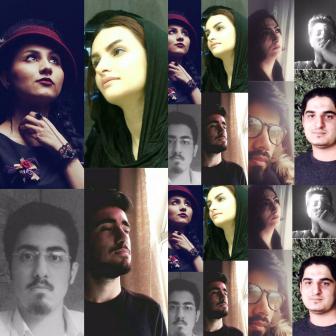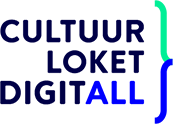Article
A new template for global poetry?
The Persian Poetry College

October 01, 2017
The multi-channel Persian Poetry College project has aimed to reverse this trend with respect to poetry in Persian, with some evidence of success. In a recent discussion with the college founder, Iranian poet {poet id="15425" title="Ali Abdolrezaei”}, now based in London, we talked about its inception and aims.
The college - available on the web and via the collaborative messaging platform Telegram - was established in early 2016 to, first of all, expand poetry readership beyond a social elite and to educate the public on how to read poetry, introducing the features and functions of the language of poetry in its modern practices. This has whipped up significant interest, as evidenced by the 7,000 members the college has attracted to the poetry forum. There are 10,000 subscribers to the fiction group. These numbers are phenomenal when compared to the usual average of 50 members for such forums on Telegram. The readership of the magazine Poetry File has been exponential - 176,000 readers visited the last issue. About 40 of the 300 pages of each monthly issue of the magazine are dedicated to the theory and practice of modern Persian poetics. And, due to the technology, Telegram can hold “live” group session workshops.
Telegram is used globally by anyone who wants to link one to one or as a group. Its advantage over other social messaging channels like Facebook Messenger is that the Iranian government does not filter it. So it is popular in Iran and Russia and elsewhere.
For example, it may be announced that a Romanian poet is going to be interviewed on the hour. As many members who can, sign in at that time. The speaker talks, or two people conduct a live conversation. The recorded piece is made available minute by minute to everyone on the channel who can listen as they click on the incoming message content. And listeners can respond. The first message might be translated and made available as a message on the channel. A whole group of people can be present on the channel at the same time. This is how live sessions are held over a session that can last for ten minutes, an hour or more.
Message history is saved. Others can always go back and see what was said yesterday or the day before, or just now. This way interviews or lectures are recorded and are post-processed for online radio broadcast or on YouTube or SoundCloud channels.
The second aim of the college is to develop a new generation of poets not bound by traditional perspectives on poetry despite implicit cultural and explicit political constraints. This goal required the establishment of a fresh foundation, a sort of cultural clearing, neither predefined by religious thought nor steeped in traditional literature. So the early joiners were predominantly the younger generation with an active interest in poetry, and from the provinces, rather than the elite from the major cities like Tehran, Shiraz, and Tabriz. The current membership of 17,000 (poetry + fiction) is a mix of local and global, from Sydney to the Sistan province of Iran, from Cologne to Kurdistan.
Developing the college as a movement without funding or seed capital is based crowd sourcing. In our conversation, Abdolrezaei spoke of expanding the college’s media reach by offering free teaching and coaching to members who want to develop their poetry, in exchange for their media skills. In this way everyone pools their talents. Member poets in this Iran issue of PIW have contributed in the following way: Fatemeh Ghahremani with graphic design; Ameneh Bajouras an editor; and Sarya Abra and Saeed Banaie with web design and/or organisational skills. Such collaboration has made it possible to create a media platform and bypass censorship. Practical assistance, however, is not the basis for selection of the poets in this issue, but the consistent production of new material and their promise.
Any point of a rhizome can be connected to any other, and must be.
Among the poets featuring in this issue, some like Bahar Tavakoli are semantically-centred, using clear, highly translatable language:
Others, like Ameneh Bajour have a bias - not toward content, but rather to form - and creating their own worlds, for example, in these lines from “Accident”:
Crying runs out of the house naked
And from the middle of the garden, naked
The alley runs under a truck
The city is drowned in the bath by a piece of eye
That has opened to my hands
Still other poets like Mostapha Samady are driven by social and political concerns, e.g., the experience of war in Afghanistan, as well as linguistic preoccupations, as illustrated in the way Samady ends the poem “The World”, which is mainly concerned with global inequality: “You can get at the throat of the world/ The world of this poem/ That hasn't a good form”.
Some poets in the series add a surreal dimension to linguistic bias, as in Sarya Abra's “Revolution”:
Or Saeed Banaie's poetry with its intertextual and postmodern tendencies:
Poets like Fatemeh Ghahremani are driven by their sensibilities and experiences as women. Ghahremani - a painter and graphic artist, has poems depicting harrowing pictures of domestic tension. She ends the poem “Charger” this way: “Welcome my daughter/ To the world between teeth/ Welcome”.
One can also see how the college has allowed free representation of sexuality and gender with regard to young men, moving against the cultural constraints surrounding them, as evidenced in poems by Ayoub Ahrari (“Wank” and “Pool Party”). Erotic poetry here manages to bypass current cultural and political taboos.
Even from two or three samples of each poet it is clear that they are very unlike one another. Each has taken the space to develop his or her own style and bias, though elsewhere youthful energy is often marginalised. The collective platform allows them to develop and demonstrate new possibilities of literary collaboration, and find a new audience in Persian as well as world literature.
A rhizome may be broken, but it will start up again on one of its old lines, or on new lines. Rhizome has no beginning or end; it is always in the middle, between things, interbeing, intermezzo.
Finally, another key aim is to build bridges toward global dialogue. The Iranian poetic community is usually barred from attending international festivals, due to various barriers of entry – e.g. visas, to name just one. And so the college has embarked on an online festival project. Morravej and Shirazi in their article Persian poetry blossoms...on apps tell how every month an international poet is invited to the college web site for a poetry reading and an interview on various topics. The most recent guest, the Romanian Denisa Duran, gave a reading and interview that was broadcast to 17, 000 members of the college. Her work was then featured in the 11th issue of the Poetry File in its original Romanian accompanied by Persian and English translations. A video of the interview has been published on YouTube and the college website for the record.
The next stage in the growth of the rhizome is a global multi-lingual discourse, alive and kicking. However so far it is endogenous. This collective movement in a Persian language context is expanding and absorbing what it can in dialogue with global poetry. Given the volume of its output and measure of success with a wider audience and a new breed of poets in less than two years, where can this movement go from here? First, the dialogue with global poetry can and will broaden. Poets from Turkey, Cyprus, Kosovo and Israel will be introduced in translation into Persian over the next few months.
The college offers a template for a collective revivalism that the rhizome model provides. There is no reason why we should not see spinoffs of the college in Romania, Turkey, and Western Europe, the Netherlands and the UK. Abdolrezaei in our conversation made an open invitation to poets of other languages to adopt the rhizome model and use the capabilities of the college to develop extensions in their own languages. In this way the college may become multilingual and build new audiences for world poets. “...any point of a rhizome can be connected to any other, and must be” .
Where will this movement be in five years time? We have seen how Iranian cinema has taken pride of place in international festivals and been awarded prizes. We have not seen much from Iranian poetry yet. But who knows? It might already be showing the rest of the world the way out of the impasse poetry is in – a unitary art fast losing interest among the wider public. It may revive like the phoenix out of the ashes in a hierarchical tree/root structure to one that spreads like Leaves of Grass, extending across languages with new audiences.
*Quotations about the rhizome from Gilles Deleuze & Felix Guattari, A Thousand Plateaus, Trans. Brian Massumi, Continuum 1987.
Let me bring you some good news about Persian poetry in Iran. But first, the bad news about the global situation.
“Since 2002 the share of poetry readers has contracted by 45 percent, resulting in the steepest decline [ever] in participation in any literary genre”, the Washington Post reported a few years ago. There is more poetry online, yet the share of Google searches involving the word ‘poetry’ has fallen precipitously. Today poetry searches account for only about a fifth of the total search volume they accounted for ten years ago.
It seems poetry is losing the general reader, and since the university-educated reader is no longer considered the arbiter of who is in fact a poet, poets are increasingly read mostly by other poets. And perhaps poets are a poor judge of each other. So are we on the verge of a poetic catastrophe?
This is how a rhizome comes into being, a horizontal expansion of roots.*
The multi-channel Persian Poetry College project has aimed to reverse this trend with respect to poetry in Persian, with some evidence of success. In a recent discussion with the college founder, Iranian poet {poet id="15425" title="Ali Abdolrezaei”}, now based in London, we talked about its inception and aims.
The college - available on the web and via the collaborative messaging platform Telegram - was established in early 2016 to, first of all, expand poetry readership beyond a social elite and to educate the public on how to read poetry, introducing the features and functions of the language of poetry in its modern practices. This has whipped up significant interest, as evidenced by the 7,000 members the college has attracted to the poetry forum. There are 10,000 subscribers to the fiction group. These numbers are phenomenal when compared to the usual average of 50 members for such forums on Telegram. The readership of the magazine Poetry File has been exponential - 176,000 readers visited the last issue. About 40 of the 300 pages of each monthly issue of the magazine are dedicated to the theory and practice of modern Persian poetics. And, due to the technology, Telegram can hold “live” group session workshops.
Telegram is used globally by anyone who wants to link one to one or as a group. Its advantage over other social messaging channels like Facebook Messenger is that the Iranian government does not filter it. So it is popular in Iran and Russia and elsewhere.
For example, it may be announced that a Romanian poet is going to be interviewed on the hour. As many members who can, sign in at that time. The speaker talks, or two people conduct a live conversation. The recorded piece is made available minute by minute to everyone on the channel who can listen as they click on the incoming message content. And listeners can respond. The first message might be translated and made available as a message on the channel. A whole group of people can be present on the channel at the same time. This is how live sessions are held over a session that can last for ten minutes, an hour or more.
Message history is saved. Others can always go back and see what was said yesterday or the day before, or just now. This way interviews or lectures are recorded and are post-processed for online radio broadcast or on YouTube or SoundCloud channels.
The second aim of the college is to develop a new generation of poets not bound by traditional perspectives on poetry despite implicit cultural and explicit political constraints. This goal required the establishment of a fresh foundation, a sort of cultural clearing, neither predefined by religious thought nor steeped in traditional literature. So the early joiners were predominantly the younger generation with an active interest in poetry, and from the provinces, rather than the elite from the major cities like Tehran, Shiraz, and Tabriz. The current membership of 17,000 (poetry + fiction) is a mix of local and global, from Sydney to the Sistan province of Iran, from Cologne to Kurdistan.
Developing the college as a movement without funding or seed capital is based crowd sourcing. In our conversation, Abdolrezaei spoke of expanding the college’s media reach by offering free teaching and coaching to members who want to develop their poetry, in exchange for their media skills. In this way everyone pools their talents. Member poets in this Iran issue of PIW have contributed in the following way: Fatemeh Ghahremani with graphic design; Ameneh Bajouras an editor; and Sarya Abra and Saeed Banaie with web design and/or organisational skills. Such collaboration has made it possible to create a media platform and bypass censorship. Practical assistance, however, is not the basis for selection of the poets in this issue, but the consistent production of new material and their promise.
Any point of a rhizome can be connected to any other, and must be.
Among the poets featuring in this issue, some like Bahar Tavakoli are semantically-centred, using clear, highly translatable language:
History had nothing for the world
except war Nothing for my lover
Except darkness
But for me
it was an unfinished war
except war Nothing for my lover
Except darkness
But for me
it was an unfinished war
Others, like Ameneh Bajour have a bias - not toward content, but rather to form - and creating their own worlds, for example, in these lines from “Accident”:
Crying runs out of the house naked
And from the middle of the garden, naked
The alley runs under a truck
The city is drowned in the bath by a piece of eye
That has opened to my hands
Still other poets like Mostapha Samady are driven by social and political concerns, e.g., the experience of war in Afghanistan, as well as linguistic preoccupations, as illustrated in the way Samady ends the poem “The World”, which is mainly concerned with global inequality: “You can get at the throat of the world/ The world of this poem/ That hasn't a good form”.
Some poets in the series add a surreal dimension to linguistic bias, as in Sarya Abra's “Revolution”:
This line won't be brain dead
Until my mother smiles
And I won't forget
The tomb stone
We buried in her head
Until my mother smiles
And I won't forget
The tomb stone
We buried in her head
Or Saeed Banaie's poetry with its intertextual and postmodern tendencies:
What plans that are not written
Go graft the graves
And Gorbachev
We are four hours ahead of London
So why are we four centuries behind?
Go graft the graves
And Gorbachev
We are four hours ahead of London
So why are we four centuries behind?
Poets like Fatemeh Ghahremani are driven by their sensibilities and experiences as women. Ghahremani - a painter and graphic artist, has poems depicting harrowing pictures of domestic tension. She ends the poem “Charger” this way: “Welcome my daughter/ To the world between teeth/ Welcome”.
One can also see how the college has allowed free representation of sexuality and gender with regard to young men, moving against the cultural constraints surrounding them, as evidenced in poems by Ayoub Ahrari (“Wank” and “Pool Party”). Erotic poetry here manages to bypass current cultural and political taboos.
Even from two or three samples of each poet it is clear that they are very unlike one another. Each has taken the space to develop his or her own style and bias, though elsewhere youthful energy is often marginalised. The collective platform allows them to develop and demonstrate new possibilities of literary collaboration, and find a new audience in Persian as well as world literature.
A rhizome may be broken, but it will start up again on one of its old lines, or on new lines. Rhizome has no beginning or end; it is always in the middle, between things, interbeing, intermezzo.
Finally, another key aim is to build bridges toward global dialogue. The Iranian poetic community is usually barred from attending international festivals, due to various barriers of entry – e.g. visas, to name just one. And so the college has embarked on an online festival project. Morravej and Shirazi in their article Persian poetry blossoms...on apps tell how every month an international poet is invited to the college web site for a poetry reading and an interview on various topics. The most recent guest, the Romanian Denisa Duran, gave a reading and interview that was broadcast to 17, 000 members of the college. Her work was then featured in the 11th issue of the Poetry File in its original Romanian accompanied by Persian and English translations. A video of the interview has been published on YouTube and the college website for the record.
The next stage in the growth of the rhizome is a global multi-lingual discourse, alive and kicking. However so far it is endogenous. This collective movement in a Persian language context is expanding and absorbing what it can in dialogue with global poetry. Given the volume of its output and measure of success with a wider audience and a new breed of poets in less than two years, where can this movement go from here? First, the dialogue with global poetry can and will broaden. Poets from Turkey, Cyprus, Kosovo and Israel will be introduced in translation into Persian over the next few months.
The college offers a template for a collective revivalism that the rhizome model provides. There is no reason why we should not see spinoffs of the college in Romania, Turkey, and Western Europe, the Netherlands and the UK. Abdolrezaei in our conversation made an open invitation to poets of other languages to adopt the rhizome model and use the capabilities of the college to develop extensions in their own languages. In this way the college may become multilingual and build new audiences for world poets. “...any point of a rhizome can be connected to any other, and must be” .
Where will this movement be in five years time? We have seen how Iranian cinema has taken pride of place in international festivals and been awarded prizes. We have not seen much from Iranian poetry yet. But who knows? It might already be showing the rest of the world the way out of the impasse poetry is in – a unitary art fast losing interest among the wider public. It may revive like the phoenix out of the ashes in a hierarchical tree/root structure to one that spreads like Leaves of Grass, extending across languages with new audiences.
*Quotations about the rhizome from Gilles Deleuze & Felix Guattari, A Thousand Plateaus, Trans. Brian Massumi, Continuum 1987.
© Abol Froushan
Sponsors
























